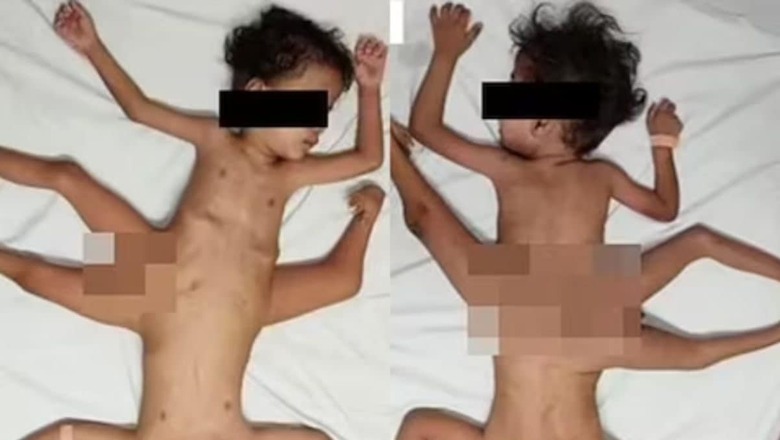
views
In a rare occurrence, conjoined twins were born with a fusion in Indonesia, with three legs, four arms and one penis. Their condition has led to them being conjoined like a spider, a term given by conjoined twins Ganga and Jamuna Mondal of India. They share one bladder, rectum and intestine. The conjoined twins took birth in 2018. This one in two million cases of conjoined twins has been recently published in the American Journal Of Case Reports. This medical condition is called Ischiopagus Tripus, twins with a fused pelvis. After the painstaking delivery and surviving gestation, the toddlers were unable to sit up and were forced to lie flat for the first three years of their lives. The Indonesian boys were born with two functioning legs, four functioning arms, one non-functional leg and a shared penis and anus.
The one fused leg could be felt and moved by both the patients. After discussion with the institution review board, the hospital ethics committee and both parents, the surgeons performed hours-long surgery to amputate their third leg. It was followed by stabilising their hip and pelvic bone so that they could sit upright. The twins have suffered no complications after their surgery.
According to doctors, conjoined twins are born in every 50,000 to 2,00,000 pregnancies. This happens when the fertilised egg splits and develops into two parts. Such a situation occurs about eight to 12 days after conception. In some research, it has also been said that twins are born due to the development of two separate embryos.
It is also important to note that the parents had two older children and there was no family history of medical issues. In addition, the mother reported no medical complications during pregnancy. The researchers have noted that only a handful of cases have been reported in the medical literature. As per the medical team in Indonesia, the Ichiopagus are estimated to be only six to 11 per cent of all the conjoined twins.
In 1989, similar twins were born in China also. They had two hands and two legs. Doctors separated the two by performing surgery in 1992. He was only two years old then. The operation took about 10 hours. A similar case also came to light in Pakistan in 2011. One of these children was very small and weak. His head was also small.
















Comments
0 comment